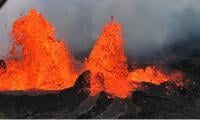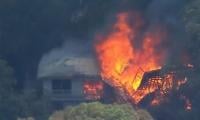The media industry in Pakistan, as well as globally, is under siege – not from political forces or censorship, but from the relentless trudge of climate change.
The logistics of news gathering and production have become a nightmare, with journalists facing impassable roads, ruined infrastructure, and total communication breakdowns while covering climate-related disasters. Imagine trying to report on a flood when you can barely reach the affected areas or even get your footage back to the newsroom.
Media infrastructure is suffering significantly. Broadcasting facilities, transmission towers, and printing presses are at the mercy of rising temperatures, violent storms, and catastrophic flooding. The result? Service interruptions, delays in news delivery, and extensive damage to equipment.
In 2022, the floods in Pakistan highlighted these issues starkly. Journalists faced harrowing conditions trying to access remote areas. Damaged roads and bridges made travel nearly impossible, and power outages combined with communication breakdowns created a perfect storm of chaos. For instance, Azadar Hussain, a reporter for a private news outlet from Kot Chutta, Dera Ghazi Khan, Punjab, was stuck neck-deep in floodwaters, risking his life to bring the story to the public.
Journalists aren't just battling the elements – they're fighting for their lives. Covering climate change often means reporting from the front lines of extreme weather events like floods, hurricanes, wildfires, and heatwaves. These hazardous conditions put journalists at severe risk. The 2020 Australian bushfires are a poignant example. Journalists worked in life-threatening environments, reporting over flames and smoke to keep the world informed.
The health risks are skyrocketing. Reporters endure heatwaves that can cause heatstroke, dehydration, and other illnesses. Wildfire smoke brings respiratory issues, and flood zones are rife with waterborne diseases. Many journalists collapse from exhaustion, requiring immediate medical attention. The pressure to deliver breaking news quickly often leads to neglecting essential weather precautions, jeopardizing reporters and camera crews.
The toll isn’t just physical. The relentless 24/7 news cycle and the race for real-time updates lead to stress, burnout, and compromised reporting quality. Witnessing human suffering and devastation firsthand can trigger anxiety, Post Traumatic Stress Disorder (PTSD), and ‘climate anxiety’ – a growing fear about the planet's future. A survey conducted by the Dart Center for Journalism and Trauma (Columbia University Journalism School) found that over 80 per cent of journalists covering climate disasters reported high levels of stress and anxiety.
Ethical dilemmas are pervasive in such situations. Journalists are tasked with navigating a delicate balance between conveying the unfiltered truth and preventing public panic or despair. This challenge was starkly evident during the 2017 Hurricane Maria in Puerto Rico, where journalists faced the daunting task of interviewing traumatized individuals about the catastrophic effects of the natural disaster, all while ensuring their reporting did not exacerbate panic among residents.
But the fight isn't over. Journalists are increasingly turning to technology to combat these challenges. Drones and satellite images help capture footage of inaccessible areas, although they require hefty investments and training. Collaborative reporting projects and advances in digital communication allow journalists to report remotely, reducing the need to be present in hazardous zones. For example, during the 2019 Amazon rainforest fires, journalists used satellite imagery and drone footage extensively to cover the vast and often inaccessible areas affected by the fires.
Like their counterparts globally, journalists in Pakistan must adapt to the escalating challenges posed by climate change. To address the need for digital innovation, effective communication, and collaborative reporting in environmental journalism, several media organizations are joining forces with journalists, digital content creators, and civil society members. Amongst them, the Global Neighbourhood for Media Innovation (GNMI) has launched the Sabz Journalism Fellowship Program (SJFP) and organized multiple training sessions for journalists, filmmakers, and digital content producers.
This initiative aims to equip participants with the latest techniques and digital tools for covering climate-centric stories, ultimately working to mitigate the catastrophic impact of climate change worldwide. The fellowship also supports international collaborative efforts, encouraging participants to influence their peers to focus on this pressing global challenge.
Leveraging technology, such as drones and satellite imagery, can enhance reporting capabilities in inaccessible areas. Maintaining physical and mental health is paramount; journalists should take proactive measures to safeguard against heat-related illnesses, and respiratory issues during smog-reporting and waterborne diseases in flood zones.
Collaborating with fellow journalists and leveraging digital modes of communication can mitigate the risks associated with hazardous reporting environments. Ethical reporting remains critical – balancing the unvarnished truth with responsible journalism that avoids undue panic is essential. By adopting these best practices, Pakistani journalists can continue to inform, educate, and mobilize the public effectively, without risking their lives, and ensuring resilient and impactful climate journalism.
The writer is a senior journalist and general secretary of Global
Neighbourhood for Media Innovation (GNMI), a registered non-profit media development organization that drives social impact through innovative use of media and technology.















